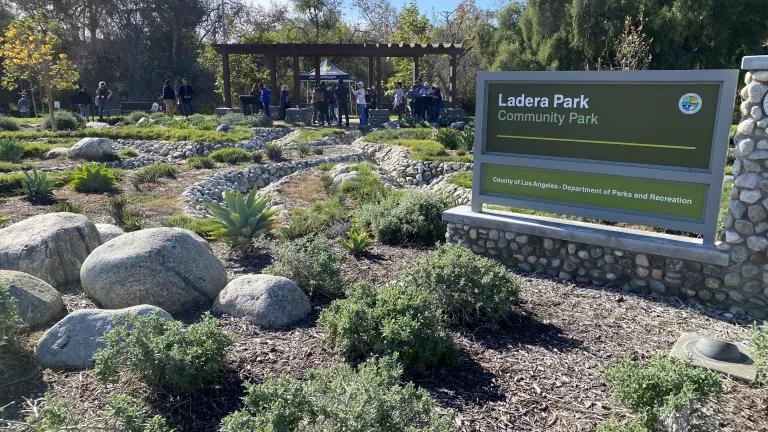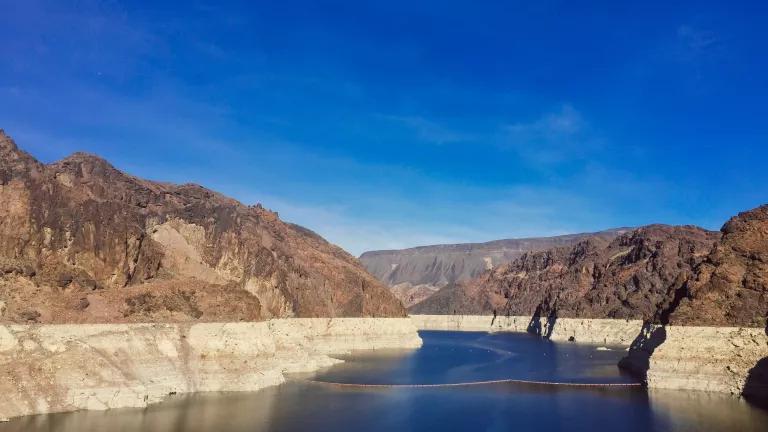DWR's Unsustainable Initial Water Supply Allocation for 2023
Instead of gutting environmental protections, maybe this is the year that California finally reforms these unreasonable water supply contracts.

While the California Department of Water Resources’ initial water supply allocation for the State Water Project is ostensibly only 5%, this allocation is a lot more water than it initially appears (more than 1.4 million acre feet of water) – and almost certainly more water than DWR can sustainably deliver if 2023 remains dry.
Last year, for the first time in its history, DWR announced that the State Water Project allocation would deliver water only to meet human health and safety needs. While this was described in news stories as an initial allocation of “zero percent,” this initial allocation actually amounted to more than 800,000 acre feet of water for its contractors, because:
- First, DWR’s initial allocation included 340,000 acre feet of water for human health and safety to its contractors. That is equivalent to more than a 5% allocation for the entire SWP.
- Second, DWR’s initial allocation included a 50% allocation to DWR’s Feather River Settlement Contractors, equivalent to approximately 500,000 acre feet of water for agribusinesses along the Feather River. DWR does not count those water deliveries as part of the State Water Project’s allocation.
This year, DWR announced a 5% initial allocation, even though the State Water Project seems to be in a worse position today than it was at this time last year. First, water storage at DWR’s Oroville Dam nearly 100,000 acre feet lower than the same time last year. In addition, this year DWR is on the hook for far greater water deliveries to its Feather River Settlement Contractors than last year – more than 1 million acre feet of water – because DWR’s antiquated contract with these irrigators requires a 100% allocation in each of the next 5 years, even if there isn’t a drop of water in the Feather River. (On the plus side, the snowpack is higher than the same time last year – but its very early in the year, and we saw just last year how record snowpack in December quickly disappeared)
So even though DWR had less water in storage behind Oroville, and is contractually obligated to deliver 500,000 acre feet more water to its Feather River Settlement Contractors, DWR announced a higher initial State Water Project allocation this year. That 5% allocation translates to more than 1.4 million acre feet, according to DWR’s modeling (see here), because:
- First, DWR’s initial allocation includes more than 250,000 acre feet of water for human health and safety in addition to the 5% SWP allocation, for a total of 465,000 acre feet.
- Second, DWR’s contract with its Feather River Settlement Contractors requires DWR to deliver a 100% allocation this year – more than 1 million acre feet of water.
|
2022 Initial Allocation |
2023 Initial Allocation |
|
| Initial Allocation | 0% - water allocated only for Human Health and Safety | 5% plus water for Human Health and Safety |
| Oroville Reservoir Storage |
1,054,996 AF |
964,420 AF |
| DWR’s Water Supply obligation to Feather River Settlement Contractors | 50% (approximately 500,000 acre feet) | 100% (more than 1,000,000 acre feet) |
What’s most troubling is that it does not appear that the State Water Project can sustainably deliver this amount of water if 2023 is dry. DWR’s announcement warns that the agency may once again seek to violate minimum water quality standards that protect fish and wildlife in the Delta through the use of Temporary Urgency Change Petitions (TUCPs). DWR’s proposal would sacrifice the environment – and the fishing jobs, Tribes, and communities that depend on its health -- and violate its water rights, in order to prioritize water deliveries to agribusinesses that claim senior water contracts. During the 2013-2015 drought, the State Water Board concluded that the failure to meet minimum Delta water quality standards and maintain water temperatures for salmon below Shasta Dam are “not sustainable for fish and wildlife and that changes to the drought planning and response process are needed to ensure that fish and wildlife are not unreasonably impacted in the future and to ensure that various species do not go extinct.” Yet DWR and the Bureau of Reclamation have continued this failed approach in every critically dry year since then.
What’s more, the State Water Project’s proposed operations appear to result in water elevations behind Oroville Dam dropping below the level where the project can produce hydropower, resulting in the loss of hydropower production from August to December 2023 – similar to what happened in the summer of 2021. This is not simply a function of hydrology, but is the result of these Feather River Settlement Contracts that require DWR to drain the reservoir to meet its outdated and unreasonable terms.
The State Water Project’s and Central Valley Projects’ contracts with senior water rights claimants are unreasonable under the State Constitution, and reforming these contracts is critical to protect the environment and to ensure safe drinking water. To its credit, the federal Central Valley Project has begun the process of renegotiating its contract with the San Joaquin River Exchange Contractors. It’s time for the State to begin a public process of renegotiating or otherwise reforming its unreasonable contract with the Feather River Settlement Contractors.
Finally, DWR’s modeling also shows that if the SWP only met human health and safety needs, water deliveries would equate to 366,000 acre feet – nearly 100,000 acre feet less than the 465,000 water needed to satisfy a 5% allocation and meet human health and safety. That’s nearly 100,000 acre feet of discretionary water deliveries to agricultural contractors of the State Water Project that are not needed for human health and safety.
The Metropolitan Water District of Southern California and other municipal water suppliers that get water from the State Water Project would receive nearly the same amount of water under a 0% allocation as they would under a 5 or 10 % allocation, as the graphic below shows. That’s because the State Water Project will deliver water supply for human health and safety under either scenario:
Taken together, DWR’s modeling and initial allocation announcement sure seem to indicate that the State Water Project cannot meet its obligations if 2023 is dry. Instead of gutting environmental protections through TUCPs, and losing the ability to produce hydropower, maybe this is the year that the State finally reforms these unreasonable water supply contracts.
At the very least, reforming these unreasonable contracts is what I’m asking Santa to deliver this year. That and a whole bunch of snow.



